

I am well aware that the 4x5x5 has been a mass produced puzzle now for the better part of four or five years as of this writing (25 Jan 2015). The only reason I am doing this now is for the sake of completeness and finishing projects that I started many years ago (circa 2007-2008).
My inspiration for this puzzle comes from two sources. The first source is Tony Fisher, who fascinated me early on with the idea of cuboid transformations and at this point my preference for this type of build is pretty obvious. The second inspiration comes from Aleh Hladzilin, who may not have been the first to make a 4x5x5, but he was the first to make one using the truly versatile Eastsheen 4x4x4 mechanism.
My version of the 4x5x5 is essentially a direct copy of Aleh's work from many years ago, or what I believe is his work. I've never seen an internal mechanism picture of his particular puzzle but the way to make the transformation is very obvious and I'm willing to bet that barring little differences our two mechanisms are pretty much identical.
The puzzle is fairly challenging to build, above the level necessary to make a 4x4x5 cuboid. Aside from the extra pieces that need to be made, the corners can get a little bit dicey if not made well, since there is very little overlap room when the corner's layer is in mid-turn on the 5x5 face.
Since the 4x5x5 puzzle already exists as a production puzzle, there is almost no point in making your own. I estimate my build time at approximately 100-120 hours total scattered over the past seven or so years. The puzzle was perhaps 60% finished when I stopped making custom puzzles in roughly 2009, and only recently decided to finish this and probably put in 40 hours doing so. Much of the extra time was spent reinforcing existing pieces, capping the big exposed holes (I don't like seeing big exposed holes on Eastsheen transformations, they are rather unsightly), and also anguishing about how to make the puzzle fully disassemble-able (is that a word?). It's the same sort of agonizing I did when designing a "cheater" cap in my 3x4x4 puzzle. In this case, the cheater caps are the two 5x5 face centers and two adjacent pieces in a middle layer like the 3x4x4.
Really the point of this exercise was to finish what I started, and to demonstrate that a little skill and perseverance are sufficient tools for completing such a massive job.
Or you can go buy an Ayi 4x5x5 cuboid for less than $40 dollars. At that kind of price my time was worth about 33 to 40 cents an hour. So really the only return on my investment was pride. Or stubbornness.
Anyway I'm somewhat past trying to explain the process, so a picture gallery of whatever pictures I took along the way this last go-around will be below this. If I find any early construction pics from six+ years ago I'll include at some point.
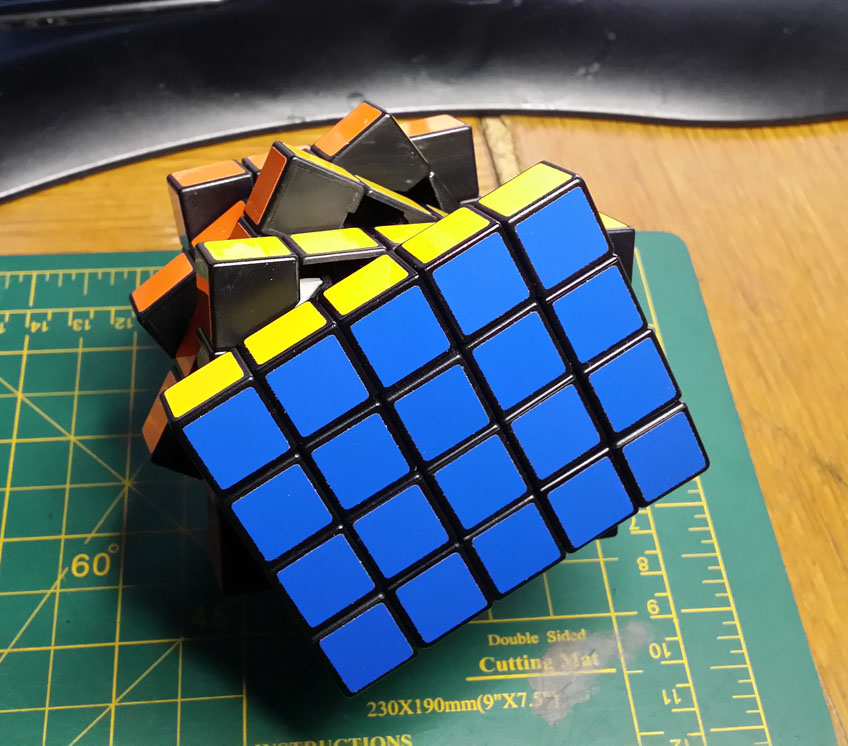
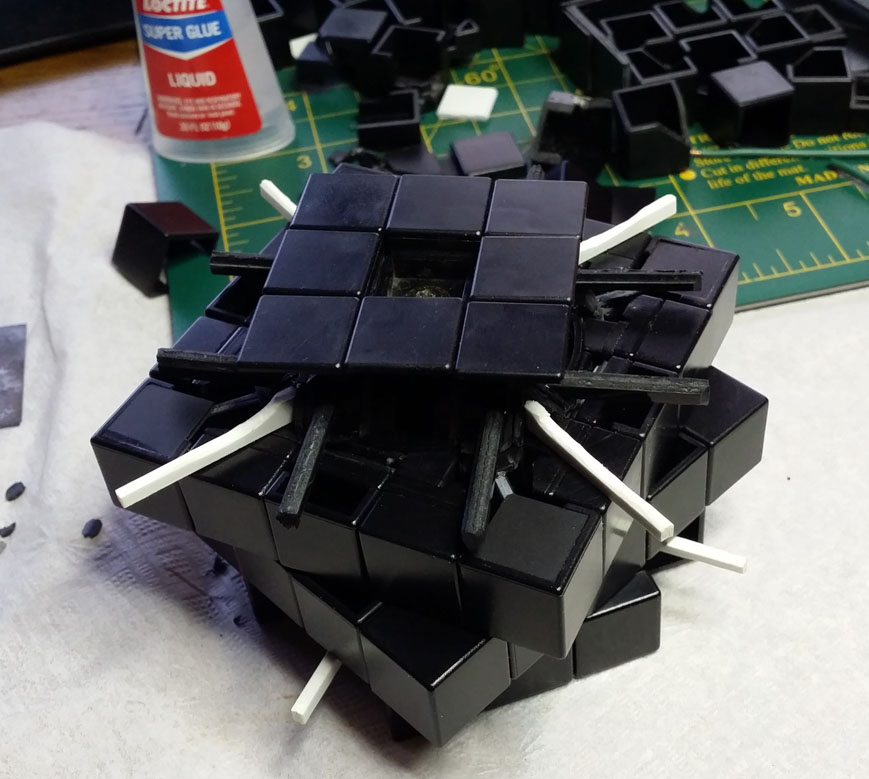


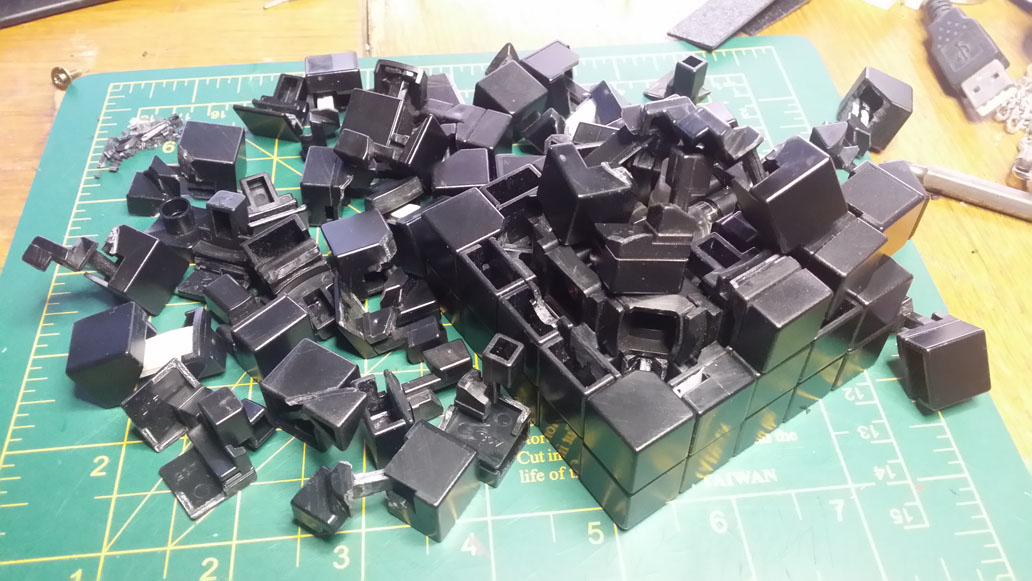
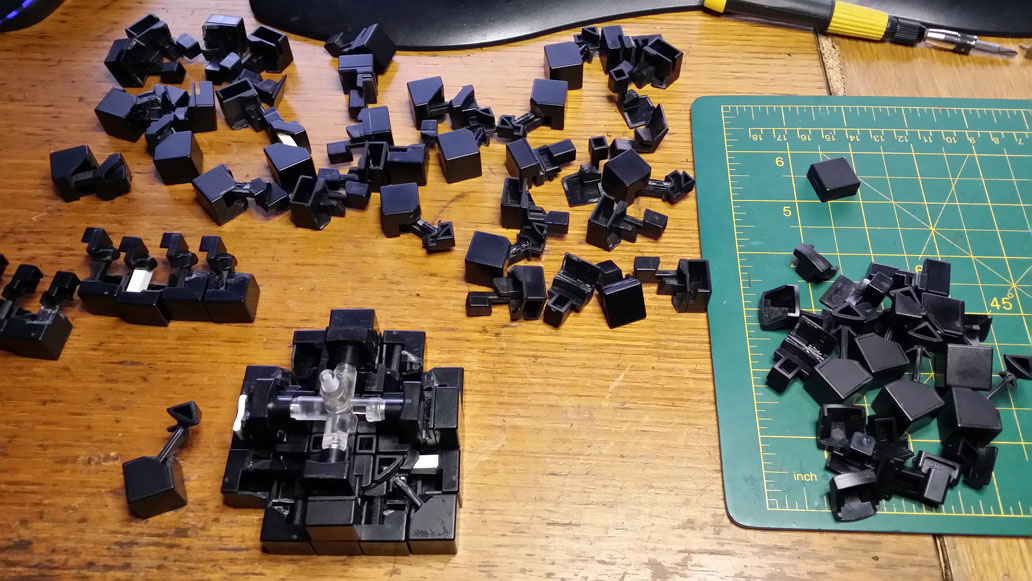

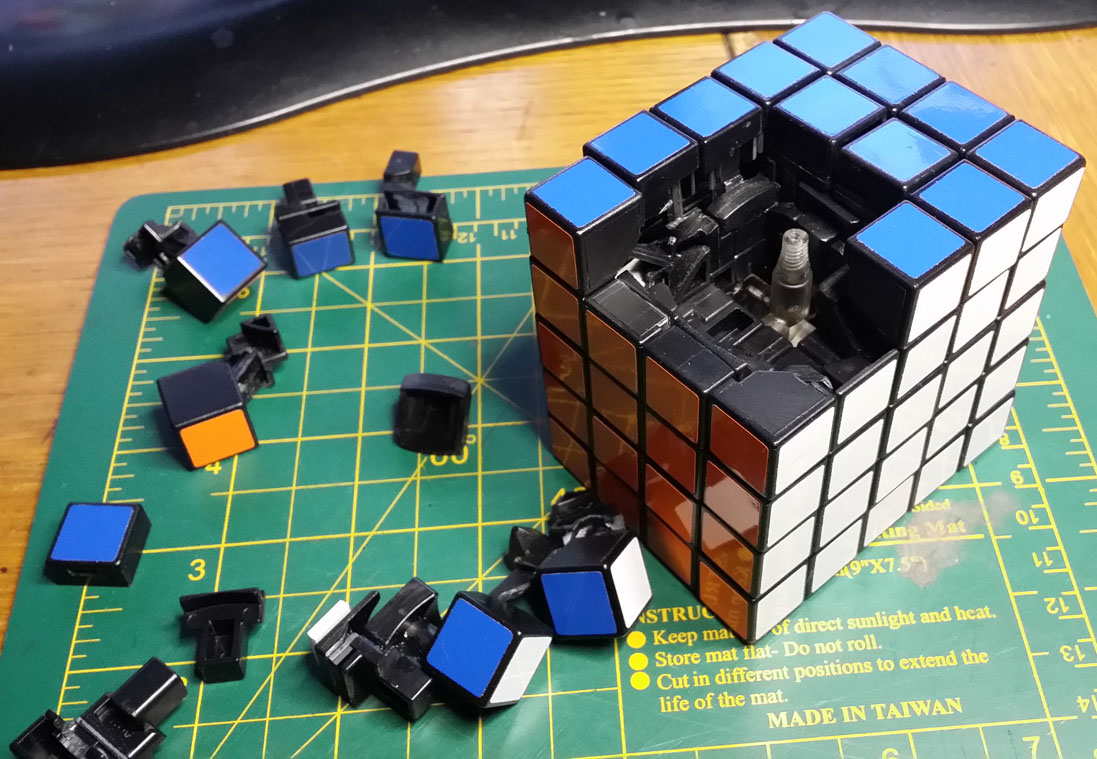

Quick rundown of the parts needed:
1. 16x Layer 2/3 side middle cubie
2. 8x Layer 2/3 center cubie
3. 8x Layer 2/3 edge cubie
4. 8x Layer 1/4 middle edge cubie
5. 8x Layer 1/4 side edge "left" cubie
6. 8x Layer 1/4 side edge "right" cubie
7. 8x Layer 1/4 ourter corner cubie
8. 8x Layer 1/4 inner edge cubie
9. 8x Layer 1/4 inner corner cubie
10. 2x center caps
11. 1x inner core
All told, there are 83 pieces that require modification. In contrast, the 4x4x5 has 69 pieces that are modified. Hmmmm, not entirely sure that the count is accurate...
Well there you have it. Only perseverance and stubbornness were necessary to finish this puzzle, despite being nothing but a Phyrrhic victory at this point. Why did I burn all those additional hours, when I could have spared myself the trouble and just bought one for $40...